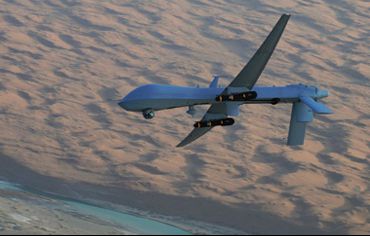In recent years, Americans have put a lot of trust in drones, believed to be able to eliminate emerging global threats: low-risk and cheap devices. The US government continues to invest billions of dollars to make armed drones the central axis of the projection of US power in the world.
Yet, these weapons were practically useless in the last two conflicts, first in Libya and then in Syria. Because?
In general, the United States uses the attacks of armed drones in two ways: during the war and to prevent it. An Air Force report reveals that unmanned aircraft launched in Afghanistan in the first months of last year, a quarter of all missiles used by coalition aircraft. The drones have proved extraordinarily effective, performing reconnaissance for US troops on the ground and protecting them from enemy attacks by monitoring the terrain. When used in a war, drones are a great way to give US soldiers a considerable advantage.
Even in a preventive role, armed drones played an excellent role. They reduce the possibility that Washington sends troops to fight and eliminate insurgents in distant places. Just think that from the 2009, the United States launched hundreds of missiles from unmanned aircrafts against terrorists.
But armed drones have heavy limitations. They are only useful when the United States has free access to airspace, a well-defined target and a clear goal. Prerequisites that the United States, for example in Syria, have never owned.
First, the airspace.
So far, armed drones have been used on countries that do not control their airspace (Somalia, Mali, Afghanistan) or where the government has given the United States some degree of consensus (Yemen, Pakistan). Such circumstances are rare. When the enemy can actually defend himself, the use of armed drones is extraordinarily difficult and could even constitute an act of war. The drones are slow, noisy, fly at low altitude and take time to hover over a potential target before engaging it. In other words, the conditions under which armed drones are effective as preventive weapons are limited. And the more drones will be used, the more the conditions will be refined to avoid their use in hostile territory.
 Second: ineffective if the target is missing.
Second: ineffective if the target is missing.
The drones are precise, but not perfect. As well as cruise missiles. Their effectiveness depends mainly on the quality of 'targeting' information. It should be noted that American drones are deeply despised in the Middle East. The CIA has been using them for years to eliminate terrorists in 'Hunter Killer' missions.
Third: useless if they do not destroy the goal.
The drones are powerful but do not inflict considerable damage nor are they feared enough to deter other tyrants from following Assad's example (the last in order of time).
In a complex context, armed drones are not so useful. Because the rapid technological solution requires a huge amount of intelligence, with data collected on the ground and field analysis. The United States can pilot a remote aircraft, but can not replace human judgment. At least not now.
Franco Iacch
(in the photos of General Atomics, above an MQ-9 Reaper, below a Predator)












